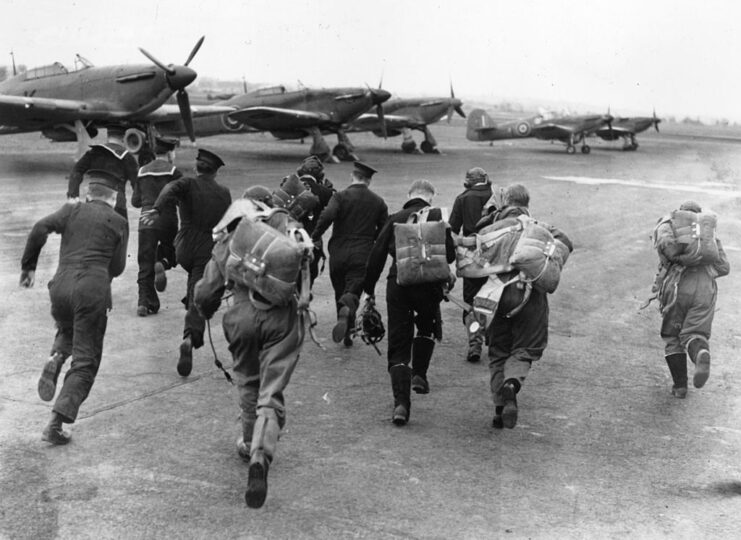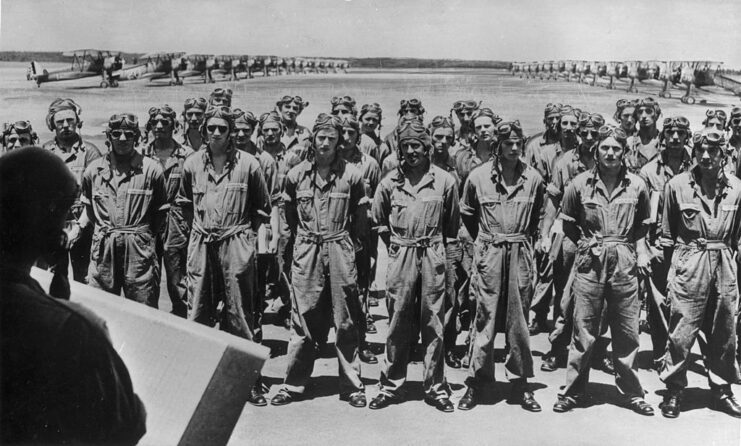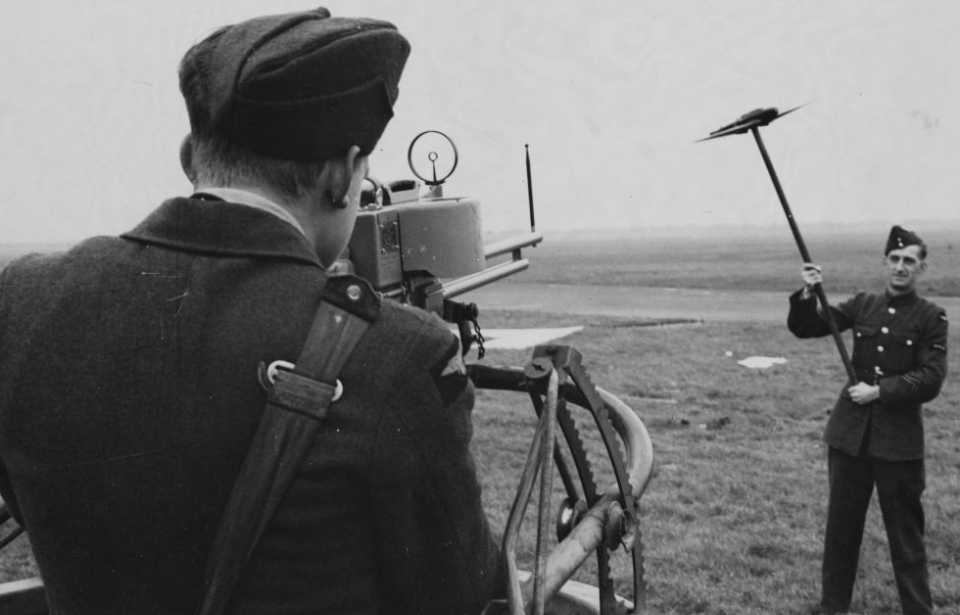The Royal Air Force (RAF) played a critical role in the Allied victory during World War II. Behind the courageous pilots who took to the skies were thousands of dedicated airmen who underwent rigorous training to perform a variety of roles. These brave souls served as the backbone of the RAF, and their preparation and training were key to their success in the skies over Europe.

Aircrew recruitment required each man to volunteer for service. Basic training for the RAF started with physical fitness and discipline, as these airmen needed to be in top shape to endure the demanding conditions of aerial combat. Marching drills, physical exercise and combat training were all essential elements. It wasn’t until each stage of the process had been passed that they could move on to the next step.
The RAF relied not only on pilots, but on ground crews to keep the aircraft operational. These men underwent some of the finest training in the entire RAF to handle the vital tasks of aircraft maintenance, refueling and arming. Ground crews were also responsible for the rapid repair of damaged aircraft between sorties.
Technical training was crucial for airmen serving in various roles, such as radio operators, navigators, and gunners. For those aspiring to become pilots, flight training was the most challenging and prestigious phase of their journey. Cadets were sent to flight schools across the country and even abroad with the British Commonwealth Air Training Plan (BCATP).
Flight training began with basic instruction in simple aircraft like the Tiger Moth, where cadets learned the fundamentals of flight and how to handle the controls. As they progressed, they moved on to more advanced aircraft.
After completing flight training, those selected for combat roles underwent further specialized preparation. Fighter pilots were taught tactics to engage enemy aircraft, while those tasked with manning bombers focused on precision bombing and evasive maneuvers.
Gunners, wireless operators and observers/navigators also underwent specific instruction tailored to their roles in the aircraft. The Featured Image of this article shows part of the training for the latter in November 1939. Here, an RAF observer/navigator trains to shoot while using a dummy cockpit and a camera gun, while his comrade stands some distance away, waving a mock enemy aircraft.
Although we don’t typically see this role as one that needed gunner training, it was one of the many requirements of the job early on. Observer/navigator training was extremely difficult. For at least a few of the training centers, these roles were taken on by failed pilots. Observers/navigators completed basic physical training like pilots, learned the mathematics needed to ensure the flights went smoothly and practiced bomber runs.

Airmen needed to not only master their roles, but understand what would happen if they were shot down behind enemy lines. To qualify for a bomber crew, all RAF personnel had to complete training on what they should know if they were taken as prisoners of war (POWs). This was conducted, in part, by those who’d actually made it back from enemy territory.
More from us: Could Hans Tragarsky Be The Unknown German Soldier In This Famous Image?
They were sent to tour Operational Training Units, to provide these airmen with the most up-to-date information possible. In combination with their other training, the RAF produced skilled air- and crewmen who were ready to face any challenge.
